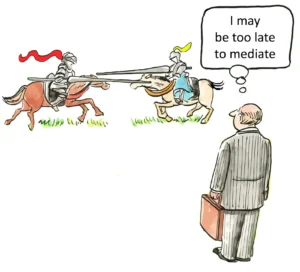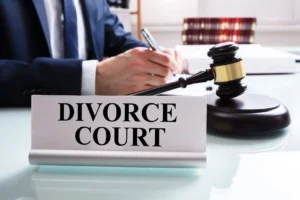What Legal Steps Follow Social Media Defamation Cases?
In today’s digital landscape, the proliferation of social media platforms has transformed how individuals communicate and share information. This transformation, while beneficial in many respects, has created new avenues for defamation that can damage reputations with unprecedented speed and reach. When false statements appear on platforms like Facebook, Twitter (now X), Instagram, or LinkedIn, victims often find themselves navigating unfamiliar legal territory. Understanding the legal steps after social media defamation becomes essential for those seeking to protect their reputation and obtain appropriate remedies.
Social media defamation occurs when users post libel or slander, negligently or with actual malice, that damages another individual’s reputation. Unlike traditional defamation that might appear in newspapers or broadcasts, online defamation can spread globally within minutes, creating permanent digital footprints that prove difficult to erase. The immediacy and permanence of these platforms present unique challenges for both victims and legal practitioners.
The legal system has adapted traditional defamation principles to address these modern communications channels. Courts now regularly consider posts, tweets, and comments as potential publications that can satisfy the elements of defamation claims. However, the path from identifying defamatory content to obtaining legal relief involves numerous procedural steps, evidentiary hurdles, and strategic decisions.
Documenting Evidence of Social Media Defamation
The first crucial step in addressing social media defamation involves thorough documentation of the offending content. This documentation serves as the foundation for any subsequent legal action and must be comprehensive and properly preserved.
When confronted with potentially defamatory statements online, individuals should immediately capture screenshots of the content, including the full context in which it appears. These screenshots should clearly show the date and time of posting, the identity of the poster (if known), and any engagement metrics such as likes, shares, or comments that might demonstrate the reach of the defamatory statement. Proper documentation creates a record that can withstand scrutiny in legal proceedings, particularly if the original poster later deletes or modifies the content.
Beyond simple screenshots, victims should consider using specialized forensic tools or third-party services that can provide authenticated captures of web content. These services often generate timestamped, certified copies that courts may find more reliable than self-created screenshots. Additionally, preserving the URL, account information, and any related content that might provide context for the statements ensures a complete evidentiary record for potential litigation.
Evaluating the Legal Elements of Defamation
Before proceeding with formal legal action, individuals must evaluate whether the social media content actually meets the legal threshold for defamation. This analysis requires careful consideration of several essential elements that courts will examine in defamation cases.
To establish a cause of action for defamation, the plaintiff must prove: (1) publication; (2) the statement concerns the plaintiff; (3) falsity; (4) the requisite degree of fault; and (5) damage. The publication element is typically satisfied when content appears on social media platforms, as these posts are visible to third parties. However, determining whether a statement is presented as fact rather than opinion can be more challenging in the casual context of social media, where hyperbole and exaggeration are common.
The requisite degree of fault depends on the plaintiff’s status. Private individuals generally need only demonstrate that the publisher acted negligently, while public figures must prove “actual malice” – that the publisher knew the statement was false or acted with reckless disregard for its truth. This distinction becomes particularly important in social media cases, where many users have significant followings that might affect their classification as public or private figures.
Sending a Cease and Desist Letter
Once defamatory content has been identified and documented, sending a cease and desist letter often represents the first formal step toward resolution. This letter serves multiple purposes in addressing social media defamation.
A well-crafted cease and desist letter identifies the victim of defamation, specifies the exact defamatory content (including URLs and screenshots), explains why the statements constitute defamation under applicable law, and demands specific remedial actions. These demands typically include immediate removal of the content, cessation of further defamatory statements, and potentially a public retraction or apology. The letter should establish a clear deadline for compliance, usually 24-48 hours, and outline the potential legal consequences of non-compliance.
While cease and desist letters have no inherent legal force, they often prove effective in resolving defamation matters without litigation. Many defamers, when confronted with the prospect of legal action, choose to comply with reasonable demands rather than face costly litigation. Additionally, these letters create a record demonstrating the victim’s attempts to mitigate damages, which courts may consider favorably if litigation becomes necessary.
Reporting Content to Social Media Platforms
Concurrent with sending a cease and desist letter, victims should report the defamatory content directly to the relevant social media platform. Most major platforms maintain policies prohibiting defamatory content and provide mechanisms for reporting violations.
When reporting content, individuals should carefully follow the platform’s specific procedures, which typically involve identifying the offending posts, explaining why they violate platform policies, and providing supporting evidence. The report should specifically reference defamation rather than more general harassment or bullying categories, as this classification may trigger different review processes. Some platforms offer expedited review for legal complaints, which may result in faster content removal.
Platform responses vary significantly, with some acting quickly to remove clearly defamatory content while others may be more hesitant to intervene in disputes between users. This inconsistency highlights the importance of pursuing multiple remedial paths simultaneously rather than relying solely on platform enforcement. Additionally, documenting all communication with platforms creates evidence of the victim’s diligence in addressing the defamation, which may prove valuable in subsequent legal proceedings.
Identifying the Proper Defendants
A critical step in pursuing legal action for social media defamation involves identifying the appropriate defendants. This process can be straightforward when defamatory posts come from identifiable accounts but becomes significantly more complex when dealing with anonymous or pseudonymous users.
In cases involving identifiable users, plaintiffs should gather all available information about the poster, including their full name, location, and any other identifying details that might facilitate proper service of legal documents. When dealing with business accounts or organizational pages, determining the legal entity responsible for the content requires additional investigation, as the account operator may differ from the named organization.
Anonymous defamation presents particular challenges, requiring specialized legal procedures to unmask the poster’s identity. This typically involves filing a “John Doe” lawsuit against the unknown defendant, followed by subpoenas to the social media platform and relevant internet service providers to obtain identifying information. Courts generally require plaintiffs to demonstrate a prima facie case of defamation before compelling platforms to reveal user identities, balancing the plaintiff’s right to seek redress against the defendant’s interest in anonymous speech.
Filing a Defamation Lawsuit
When informal resolution attempts fail, filing a formal defamation lawsuit represents the next significant step. This process involves several critical decisions that can substantially impact the case’s trajectory and potential outcomes.
The initial filing decision involves selecting the appropriate jurisdiction and venue for the lawsuit. Defamation cases may potentially be filed in the plaintiff’s location, the defendant’s location, or where the harm primarily occurred – which becomes complicated with the borderless nature of social media. Strategic considerations include the favorability of local defamation laws, the convenience of litigating in a particular court, and whether the chosen jurisdiction can exercise personal jurisdiction over the defendant.
The complaint itself must carefully articulate each element of the defamation claim, including precise identification of the defamatory statements, explanation of their falsity, description of the publication, demonstration of the requisite fault standard, and detailed accounting of the resulting damages. Plaintiffs should consider whether to include additional causes of action beyond defamation, such as false light, intentional infliction of emotional distress, or interference with business relationships, depending on the specific circumstances.
Navigating Discovery in Social Media Cases
Once a defamation lawsuit progresses beyond initial pleadings, the discovery phase presents unique challenges and opportunities in social media defamation cases. This critical phase allows both parties to gather evidence that will ultimately determine the case’s outcome.
Discovery in social media defamation cases typically includes requests for production of documents, interrogatories, depositions, and potentially forensic examination of electronic devices. Plaintiffs should seek comprehensive access to the defendant’s social media accounts, including not only the defamatory posts themselves but also private messages, drafts, deleted content, and account analytics that might reveal the extent of the publication. Defendants often resist such broad discovery, requiring courts to balance legitimate evidentiary needs against privacy concerns.
Third-party discovery directed at social media platforms themselves presents additional complexity. While platforms maintain extensive data about user activities, they generally resist disclosure absent proper legal process, and some information may be protected under the Stored Communications Act. Carefully crafted subpoenas that specify exactly what information is sought and why it’s relevant to the litigation increase the likelihood of successful discovery from these entities.
Understanding Defenses to Defamation Claims
As litigation proceeds, plaintiffs must anticipate and prepare to counter various defenses that defendants commonly assert in social media defamation cases. These defenses can significantly impact case strategy and potential outcomes.
Truth represents the most absolute defense to defamation claims. If defendants can prove the substantial truth of their statements, even if minor details are inaccurate, they generally prevail regardless of their intent or the harm caused. This defense places a premium on thorough pre-filing investigation by plaintiffs to ensure the falsity of the statements at issue.
Opinion defenses present particular challenges in the social media context, where communication often blends fact and opinion in casual, hyperbolic language. Courts typically distinguish between pure opinion (which receives constitutional protection) and opinion that implies undisclosed defamatory facts. Context matters significantly, with courts considering factors such as the platform, the poster’s typical communication style, and whether reasonable readers would interpret the statement as factual assertion or rhetorical hyperbole.
Addressing Section 230 Immunity
A significant hurdle in many social media defamation cases involves Section 230 of the Communications Decency Act, which provides immunity to online platforms for content posted by third-party users. Understanding the scope and limitations of this immunity proves essential when developing litigation strategy.
Section 230 generally prevents plaintiffs from holding social media companies liable for defamatory content posted by their users, even if the platform was notified of the content and declined to remove it. This immunity significantly limits the ability to pursue platforms as defendants in defamation actions, directing legal efforts instead toward the individual posters. The practical effect often means pursuing defendants with fewer resources than the platforms themselves, potentially limiting recovery.
However, Section 230 immunity contains important exceptions. Platforms lose protection when they materially contribute to the creation or development of the unlawful content. This exception has been interpreted narrowly, generally requiring substantial platform involvement beyond mere editing or organizing user content. Additionally, Section 230 does not shield platforms from federal criminal liability, intellectual property claims, or certain sex trafficking-related offenses.
Calculating and Proving Damages
Establishing and quantifying damages represents one of the most challenging aspects of social media defamation cases. Unlike physical injuries with medical bills and lost wages, reputational harm often proves more difficult to measure precisely.
Defamation damages typically fall into several categories. Special damages refer to specific, quantifiable economic losses directly resulting from the defamation, such as lost business opportunities, terminated employment, or canceled contracts. General damages compensate for intangible harms like emotional distress, humiliation, and reputational injury. In cases involving particularly egregious conduct, courts may award punitive damages designed to punish the defendant and deter similar behavior.
Proving these damages requires creative evidence gathering. Plaintiffs might present expert testimony from reputation management professionals, before-and-after analytics of social media engagement or website traffic, customer surveys, or testimony from individuals who changed their opinion of the plaintiff after encountering the defamatory content. Documentation of therapy sessions, medication, or other treatments for emotional distress can substantiate claims for general damages.
Seeking Injunctive Relief
Beyond monetary compensation, plaintiffs in social media defamation cases often seek injunctive relief – court orders requiring defendants to take specific actions or refrain from certain behaviors. These remedies can be particularly valuable in the digital context, where defamatory content might otherwise remain accessible indefinitely.
Preliminary injunctions, sought early in litigation, require demonstrating a likelihood of success on the merits, irreparable harm absent the injunction, a favorable balance of hardships, and public interest alignment. Courts historically hesitated to issue such injunctions in defamation cases due to concerns about prior restraint of speech. However, many jurisdictions now recognize that narrowly tailored injunctions requiring removal of specific statements already determined likely defamatory do not constitute impermissible prior restraint.
Permanent injunctions, issued after final judgment, might require defendants to remove all defamatory content, refrain from posting similar content in the future, and potentially publish retractions or corrections. Courts increasingly recognize the persistent nature of online defamation in crafting these remedies, acknowledging that digital content can resurface and cause renewed harm even years after initial publication.
Enforcing Judgments Against Online Defamers
Obtaining a favorable judgment represents only part of the battle in social media defamation cases. Enforcing that judgment – actually collecting damages or ensuring compliance with injunctions – often presents its own set of challenges.
Monetary judgments may prove difficult to collect, particularly from individual defendants with limited assets or those who have taken steps to shield their resources. Enforcement mechanisms vary by jurisdiction but typically include wage garnishment, bank account levies, property liens, and in some cases, contempt proceedings for defendants who willfully evade payment. When defendants reside in different states or countries, plaintiffs must navigate complex procedures for domesticating and enforcing foreign judgments.
Enforcing injunctive relief presents different challenges. When defendants refuse to remove defamatory content as ordered, plaintiffs may need to return to court seeking contempt sanctions. Additionally, plaintiffs often must work directly with social media platforms to remove content when defendants prove uncooperative. While platforms generally respect valid court orders finding specific content defamatory, they may require particular documentation or procedures before implementing takedowns.
Pursuing Removal from Search Engines
Even after content has been removed from social media platforms, digital traces often remain in search engine results, continuing to harm the victim’s reputation. Addressing these lingering effects represents an important step in comprehensive reputation management following defamation.
After obtaining court orders finding specific statements defamatory, plaintiffs should submit these orders directly to major search engines through their legal removal processes. Google, for instance, maintains specific procedures for requesting removal of content based on legal determinations. These requests should identify the exact URLs containing defamatory content and provide clear documentation of the court’s findings.
Beyond legal removals, individuals should consider broader reputation management strategies, including creating positive content that can displace negative search results, monitoring for reappearance of defamatory content, and potentially engaging professional reputation management services. These complementary approaches recognize that legal remedies alone may not fully restore online reputation, particularly for individuals or businesses with significant public profiles.
Considering Alternative Dispute Resolution
While litigation represents the traditional path for addressing social media defamation, alternative dispute resolution methods may offer advantages in certain circumstances. These approaches can potentially resolve disputes more quickly, privately, and cost-effectively than court proceedings.
Mediation involves a neutral third party who facilitates negotiation between the parties without imposing a solution. This process allows for creative remedies beyond what courts typically order, such as customized apologies, mutual non-disparagement agreements, or structured payment plans for damages. The confidential nature of mediation also helps limit additional publicity that might exacerbate reputational harm.
Arbitration provides a more formal alternative to court litigation, with a neutral arbitrator rendering a binding decision after considering evidence and arguments. While sacrificing some procedural protections of formal litigation, arbitration typically proceeds more quickly and privately. Some defamation cases, particularly those involving business relationships or employment contexts, may be subject to mandatory arbitration provisions in existing contracts.
Managing Public Relations During Defamation Cases
Beyond legal proceedings, individuals and organizations facing social media defamation must carefully manage public perception throughout the dispute. Effective reputation management during litigation can significantly impact both legal outcomes and long-term reputational recovery.
Strategic communication during defamation disputes requires balancing the need to correct false information against the risk of amplifying the original defamatory content. In some cases, publicly addressing defamation draws more attention to the false claims, creating a “Streisand effect” that exacerbates reputational harm. Conversely, remaining silent might be interpreted as tacit admission. This delicate balance often benefits from professional public relations guidance tailored to the specific circumstances.
For businesses and public figures, maintaining transparent communication with key stakeholders during defamation disputes helps preserve trust and mitigate damage. This might include private briefings for employees, investors, or business partners about the situation and legal steps being taken. Such communication should be carefully crafted in consultation with legal counsel to avoid statements that might complicate litigation.
Addressing Jurisdictional Challenges
The global nature of social media creates significant jurisdictional complexities in defamation cases. When defamatory content originates from users in different states or countries, determining where and how to pursue legal remedies becomes a critical strategic decision.
Domestic jurisdictional issues arise when plaintiffs and defendants reside in different states. Courts must have both subject matter jurisdiction over the legal claim and personal jurisdiction over the defendant. Establishing personal jurisdiction typically requires demonstrating that the defendant purposefully directed activities toward the forum state, which might include specifically targeting forum residents with defamatory statements or maintaining substantial connections to the jurisdiction.
International defamation cases present even greater challenges. Different countries maintain vastly different defamation standards, with some offering stronger protections for defendants’ speech and others more readily finding liability. Enforcing judgments across international boundaries involves complex treaty obligations and recognition procedures that vary significantly between nations. These complications often necessitate specialized legal counsel with international litigation experience.
Preventing Future Defamation Incidents
After resolving a social media defamation case, implementing preventative measures helps reduce the likelihood and potential impact of future incidents. These proactive steps complement legal remedies by strengthening overall reputation management.
Regular monitoring of social media mentions and online reviews allows for early detection of potentially defamatory content. Numerous software tools and services can automatically alert individuals and businesses when they are mentioned online, enabling prompt response before false information spreads widely. This monitoring should extend beyond major platforms to include industry forums, review sites, and emerging social networks.
Developing clear crisis response protocols before defamation occurs ensures more effective reaction when incidents arise. These protocols should identify key decision-makers, establish communication chains, outline documentation procedures, and provide templates for common responses. For businesses, training employees on social media policies and defamation risks reduces the likelihood of inadvertently creating liability through inappropriate online communications.
Understanding the Evolving Legal Landscape
The legal framework governing social media defamation continues to evolve as courts and legislatures grapple with applying traditional principles to emerging technologies. Staying informed about these developments helps victims and their counsel navigate this changing landscape effectively.
Recent judicial decisions have increasingly recognized the unique harm caused by online defamation, with some courts becoming more willing to issue preliminary injunctions and approve broader discovery of social media accounts. These trends reflect growing judicial understanding of how digital defamation differs from traditional print or broadcast defamation in its permanence, searchability, and potential for viral spread.
Legislative reforms in some jurisdictions have begun addressing specific challenges of online defamation. These include streamlined procedures for identifying anonymous defamers, modified statutes of limitations that account for the ongoing nature of online publication, and in some cases, specialized defamation courts or procedures designed to resolve digital disputes more efficiently. As these reforms continue, they may provide additional tools for addressing social media defamation.
Conclusion
Navigating the aftermath of social media defamation requires understanding numerous legal steps, from initial documentation through potential litigation and enforcement of remedies. The process demands careful strategic decisions at each stage, balancing legal considerations with practical reputational concerns and resource constraints.
The unique characteristics of social media – its permanence, global reach, and potential for anonymous posting – create both challenges and opportunities in defamation cases. While these platforms can amplify reputational harm beyond what traditional media might cause, they also generate digital evidence that can strengthen legal claims when properly preserved and presented.
As courts continue developing jurisprudence around online defamation, victims benefit from working with legal counsel experienced in this specialized area. The intersection of traditional defamation principles with modern communication technologies creates nuanced legal questions that require both substantive knowledge and strategic insight. Through careful navigation of these complexities, individuals and organizations can pursue appropriate remedies while working toward long-term reputational recovery.
Citations:
- Slander on Social Media Explained
- Defamation Law and Fourth Estate Legitimacy
- Journal Article on Social Media Defamation
- Social Media and Online Defamation Insights
- High-Profile Defamation Cases in News
- Overview of Defamation Cases
- Social Media Defamation and Libel Review
- Understanding Social Media Defamation Risks
- Washington University on Defamation Law Policy
- Steps for Handling Social Media Defamation
- Social Media Influencer Lawsuit Trends
- Examples of Social Media Defamation Cases
- Nolo Guide to Social Media Defamation
- Online Defamation and Social Media Laws
- Guide to Filing a Defamation Lawsuit
- Simplified Defamation Law Basics
- Defamation and Privacy Law in the U.S.
- Republicans and Defamation Law Changes
- Legal Issues with Social Media Use
- Digital Age Defamation and Reputation Management
- Defamation and First Amendment Rights
- Being Kind on Social Media to Avoid Defamation
- Jurisdiction in Social Media Tort Cases
- Cato on Government Regulation of Social Media
- ScienceDirect Study on Social Media Defamation
- Internet Trademark Infringement and Defamation
- Defamation and Libel in Social Media Landscape
- Cultural Semantics of Defamation Cases
- Growing Scholar Article on Social Media Defamation
- How Brands Combat Online Defamation
- FindLaw on Defamation and Social Media
- Another Growing Scholar Defamation Study
- Overcoming Competitor Defamation Online
- Northwestern Law Panel on Social Media Defamation
- Semantic Scholar PDF on Defamation Law
- Social Media Defamation and Libel Issues
- BBC News on Defamation Topics
- Northwestern Law on Evolving Defamation Law
- Top Defamation Cases of 2024
- Internet Defamation Cases Overview
- Stanford Precedent Cases on Defamation
- American University on Defamation Law Trends
- Fourth Estate Legitimacy and Defamation Law
- Famous Defamation Cases by Mullen Law
- Liability for Disinformation Amplification
- FIU Law on Stagnant Online Defamation Laws
- Defamation Laws and Social Media in India
- School Social Media Policy Violates Free Speech
- Nine Shocking Defamation Cases by SGLaw




















